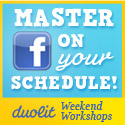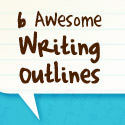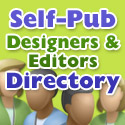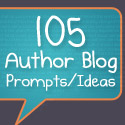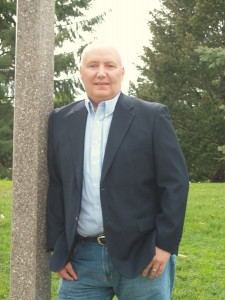 Today we’re speaking with John L. Betcher, author of the recently-released The Missing Element: A James Becker Mystery. In addition to his writing, he also contributes greatly to the writing/self-publishing community through his blog, Self-Publishing Central and through the Agent Query Connect forum. John has been a great friend to Duolit — we were thrilled to sit down with him and find out more about his self-publishing experience.
Today we’re speaking with John L. Betcher, author of the recently-released The Missing Element: A James Becker Mystery. In addition to his writing, he also contributes greatly to the writing/self-publishing community through his blog, Self-Publishing Central and through the Agent Query Connect forum. John has been a great friend to Duolit — we were thrilled to sit down with him and find out more about his self-publishing experience.
On Self-Publishing
- When and why did you make the decision to self-publish?
- I have self-published two books – each for a different reason.
- My first self-pub experience was with The Little Black Book of Volleyball Coaching – a very small book on the topic of establishing your coaching philosophy. This one, I knew I would be self-publishing from the word go. The target market is tiny . . . and prospect for profit minuscule. But I had some experiences I wanted to share with other youth coaches (of any sport, not just volleyball). So I wrote the book.
- I was thinking at the time that I might be handing out the book at volleyball-related speaking engagements, or in conjunction with coaching classes I might teach on occasion. The speaking opportunities have been available – but my interest in traveling to where the conferences and conventions are occurring has not been great. And cost has been a consideration. I’d love to share my experiences more widely – but the expenses of travel are prohibitive. The book continues to sell at the expected rate.
- My second self-pub experience was an entirely different situation. I had written my first novel – a mystery/suspense book – and was hoping to get it published through traditional publishing channels. I spent a lot of time researching submission requirements, then writing and re-writing query letters and sending them to literary agents. No success. Maybe I didn’t execute on this process well. Maybe my book idea wasn’t commercially viable. I don’t know. But for whatever reason, after querying a couple hundred agents over a period of more than six months, I decided to abandon the traditional pub route for this book and give it a try on my own.
- Describe your self-publishing experience – what was more/less difficult than you anticipated, what unexpected events popped up, etc?
- These are difficult questions for me to answer at this point in my self-publishing journey. Setting the volleyball book aside, and focusing on the novel for the remainder of this Q&A session, my self-pub experience has only just begun.
- The official publication date for The Missing Element, A James Becker Mystery, was March 8th, 2010. But I didn’t actually have books in stores until after mid-April. I was so anxious to see the silly thing in print that I didn’t really plan its release very well. My first boxes of books arrived at my home in Minnesota while I was on a month-long working vacation in Florida. Dumb.
- By the time I got back home around April 16th, my Amazon sales rank was already in the tank. I don’t know their exact formula – but I’m sure it’s at least related to number of books sold divided by number of days the book has been listed on Amazon. Well . . . mine had been listed since March 8th, with almost no sales until late April. Ouch! But what should I have expected? I hadn’t really even started to promote the book during that timeframe.
- Once I was back at home I was able to work with my local independent bookstores to place some books on their shelves. I also got my FaceBook page up and running, opened a Twitter account and tweaked the web page I had originally dedicated to volleyball coaching pursuits. Shortly thereafter, I started my Self-Publishing Central blog, to share my self-publishing experiences with others.
- My local newspaper actually contacted me for an interview before I was ready for them. I wanted to get some independent reviews in my pocket, maybe enter a contest or two to see if I could get an honorable mention or something, and see if I could develop my web presence, in general, before I made any local press appearances. (In retrospect, I think the wait was a bad decision. I should have done as much promoting as I could, as soon as I had the chances. Lesson learned.)
- The newspaper dedicated a half page and a color pic to my debut fiction effort in Late May. And the bookstore held a book-signing for my book on June 5th. I appeared on a local radio talk show as promotion for the signing. That was fun!
- One unanticipated opportunity “popped up” when I emailed my college to ask if they would include my writing pursuits in an upcoming issue of their alumni publication. I immediately got an invitation to an Alumni Author Event they had scheduled at the school for the end of May. Because I was a late entry, I didn’t have the best table time (I was sitting there over lunch, when everyone was eating, and the hall where I sat remained largely empty.) Next time I’ll get my name in sooner and see if I can get in more schmoozing with the Alums. I still had fun talking with other authors, though.
- I think the most difficult part of self-pubbing for me – so far – has been getting exposure for my book. I was disappointed to find out that the “Expanded Distribution Channel” offered by my POD printer didn’t offer a competitive wholesale price for the book. If I wanted to get the book into stores and libraries, I would have to do that on my own.
On Design
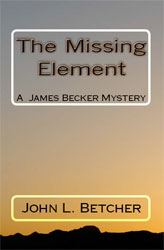
- How did you tackle the design work for your books?
- I found that the actual laying out of the text, selecting a font style, choosing a book size, etc. was pretty straightforward with my POD printer. I have a prototype Word document with appropriate margins that I used to copy my manuscript into. Then I changed the line spacing and font size until I was happy with the look and inserted front and back matter. The printer provided an ISBN. That was easy – though I’ll need to buy a different one if I ever decide to print elsewhere – at a cost of about $125.00. (If I have just spoken a foreign language to you, I recommend that you get some help from folks like Toni and Shannon [Duolit note: haha- Thanks John!].)
- So the nuts and bolts of formatting the book’s interior weren’t too difficult for me. Though it was time-consuming. And if I were not proficient at word-processing, and wasn’t competent with Adobe Acrobat, putting together the book interior would have been much more challenging.
- I really did not give my first book the design attention that it deserved. I instead elected to tweak one of the predesigned templates available from my printer. That had the advantage of being “free.” And it had the dual disadvantages of not being the greatest design ever; and not belonging to me. If I publish elsewhere, I’ll need a new cover design. Which is fine with me.
- The readers I have spoken with tell me they like the design. One reviewer called it “horribly boring” or something to that effect. But he laid the blame on the printer for not providing more interesting templates. So the current cover design is either good or horrid, depending on who you talk to.
- I admit that I shorted the budget on book design. Would I do it again for a first book? Not sure. I think I would look harder though at the cost involved to see if it would be worth the investment. A good cover design increases your chances of garnering an impulse buy – even in online stores.
- For my second book – yet to be released as of this writing – I found a great photo online. It was by a Belgian photographer. We exchanged emails and I was able to license the pic for use on my second cover for $50.00. And the photo made it from Belgium to Minnesota within 24 hours of my first email. It is truly becoming a small world.
- The overall cover layout of the two books is similar in color schemes, gradients, texture, type-faces, etc. The intent of all of this is to ‘brand’ my series.
Advice for other Self-Publishing Authors
- What advice would you give to other authors considering self-publishing?
- You need to know a lot more than how to write if you want to be successful at self-publishing. I’ve had a lot of computer experience. My wife is very artistic. And I had a desire to learn all the stuff I needed to know to get my book in both paper and digital formats. If that kind of stuff is not up your alley – hire some help.
- A second bit of advice is one that all authors already know, but I feel the need to reiterate. Weak editing is the bane of many self-published works. Edit, proof, edit, edit, proof, proof and edit and proof some more. Have others help. Hire a professional if you are not a good editor. But poor editing is the number one thing that most readers will complain about when discussing self-pub books.
We’ll have the rest of John’s interview on Wednesday (psst — subscribe to the RSS feed so you don’t forget). Next time, we’ll discuss his insightful views on marketing strategy and soliciting reviews for his work. In the meantime, for more on John, follow his great tweets @JohnBetcher or visit his newly redesigned website.
This post is part of our series of interviews with those involved with self-publishing. If you’re interested in being interviewed for the series, give us a shout!
 We're
We're 



